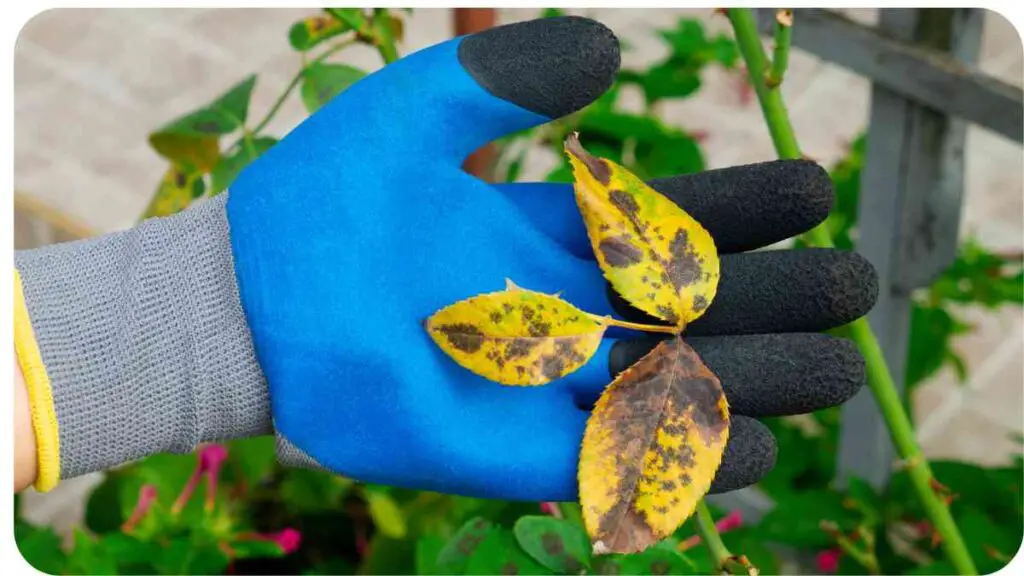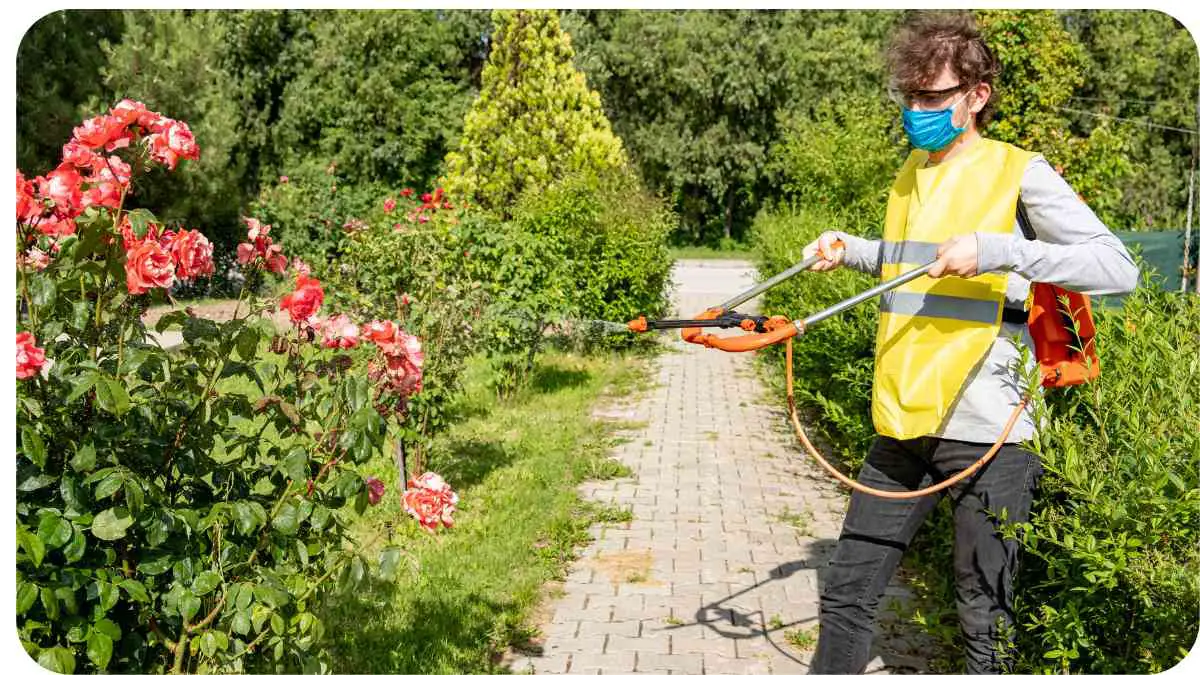Ornamental trees bring beauty and charm to our landscapes, but they can fall victim to fungal diseases that threaten their health and vibrancy. If you’re dealing with these issues, you’re not alone.
Fungal diseases are common in ornamental trees, and knowing how to manage them is crucial for maintaining a thriving garden. In this article, we’ll dive into the common fungal diseases that affect ornamental trees, how to spot them, and what you can do to prevent and treat these pesky problems.
| Key Takeaways |
|---|
| Regular inspections of ornamental trees are crucial for early detection of fungal diseases. |
| Common fungal diseases include powdery mildew, rust, leaf spot, and anthracnose. |
| Maintaining good garden hygiene and proper tree spacing can help prevent fungal outbreaks. |
| Natural remedies like neem oil and garlic sprays can be effective against some fungal diseases. |
| Integrated Pest Management (IPM) combines cultural, biological, and chemical strategies for comprehensive disease control. |
| Prompt treatment and management are essential to prevent the spread of fungal diseases to other plants. |
| Selecting disease-resistant tree varieties and proper site placement can reduce the risk of fungal infections. |
Understanding Fungal Diseases

What Are Fungal Diseases?
Fungal diseases are caused by various fungi that invade and disrupt the normal function of plants. These fungi can live in soil, on leaves, or in other plant tissues, often leading to significant damage if not controlled. Think of fungi as the uninvited guests at a garden party they show up unannounced and cause a lot of trouble.
Soil drainage issues can exacerbate fungal problems in trees. To address poor drainage, check out this guide on solving soggy garden beds, which offers practical solutions for improving soil conditions and reducing fungal risks.
Why Ornamental Trees Are Susceptible
Ornamental trees, with their lush foliage and often dense canopies, provide a perfect environment for fungal growth. Moisture, shade, and warm temperatures are all conducive to fungal proliferation. Add to that the stress from environmental factors or poor care, and you’ve got a recipe for trouble. Just like a cozy, cluttered attic might attract unwanted pests, a poorly maintained garden can attract fungal diseases.
Common Fungal Diseases in Ornamental Trees

Powdery Mildew
Powdery mildew is like that annoying dust that settles everywhere it’s hard to ignore and tends to spread. It appears as white, powdery spots on leaves, stems, and buds. This fungal disease thrives in warm, dry environments and can cause leaves to become distorted or drop prematurely.
Table: Symptoms of Powdery Mildew
| Symptom | Description |
|---|---|
| White Powdery Spots | Thin, white coating on leaves and stems |
| Leaf Distortion | Leaves may curl or become misshapen |
| Premature Leaf Drop | Affected leaves may fall off early |
Rust
Rust fungi are notorious for causing bright, rusty-orange pustules on leaves, stems, and sometimes even on fruits. They can be quite striking and can cause significant defoliation if not managed properly.
Table: Symptoms of Rust
| Symptom | Description |
|---|---|
| Orange Pustules | Rust-colored pustules on the underside of leaves |
| Leaf Drop | Leaves may drop prematurely |
| Stunted Growth | Affected branches might show stunted growth |
Leaf Spot
Leaf spot fungi cause small, dark spots on leaves that can merge and create larger areas of damage. These spots can sometimes be surrounded by a yellow halo. This condition often results in reduced photosynthesis and overall tree vigor.
Table: Symptoms of Leaf Spot
| Symptom | Description |
|---|---|
| Dark Spots | Small to large dark spots on leaves |
| Yellow Halo | Yellow ring around the dark spots |
| Reduced Vigor | Overall decline in tree health |
Anthracnose
Anthracnose is a catch-all term for various fungal infections that cause dark, sunken lesions on leaves, stems, and fruit. This disease often starts with small, dark spots and can lead to significant damage if not controlled.
Table: Symptoms of Anthracnose
| Symptom | Description |
|---|---|
| Dark, Sunken Lesions | Dark, sunken spots on leaves and stems |
| Premature Leaf Drop | Affected leaves often drop early |
| Reduced Growth | Trees may show stunted growth |
Signs and Symptoms
Identifying Powdery Mildew
If your ornamental tree’s leaves are covered in a white, powdery substance, you’re likely dealing with powdery mildew. Look for this in dry conditions, especially during warm weather.
Recognizing Rust
Rust appears as bright orange or yellow pustules on the underside of leaves. It’s a vibrant color that stands out against the green foliage.
Spotting Leaf Spot
Leaf spot will typically show up as dark, irregular patches on the leaves. These spots can spread, leading to more extensive damage.
Detecting Anthracnose
Anthracnose is characterized by dark, sunken spots on leaves and stems. You might also notice early leaf drop or dieback in severe cases.
Prevention Strategies
Cultural Practices
Maintaining good garden hygiene is key. Remove fallen leaves and debris, which can harbor fungal spores. Pruning to improve air circulation also helps reduce moisture levels that fungi thrive on.
Environmental Controls
Control humidity around your trees by ensuring proper spacing and reducing overhead watering. Fungi love a damp environment, so keeping things dry can help keep them at bay.
Tree Selection and Placement
Choose tree species that are resistant to common fungal diseases in your area. Planting in well-drained soil and avoiding overcrowding will also help keep fungal issues to a minimum.
Treatment Options
Chemical Treatments
Fungicides can be effective but should be used as a last resort. Always follow application instructions carefully to avoid harming beneficial organisms or causing chemical resistance.
If you notice wilting despite proper watering, it might be due to fungal infections. Learn more about diagnosing and treating these issues in this article on wilting plants, which provides insights into common causes and solutions.
Natural Remedies
Consider using natural treatments like neem oil or garlic sprays. These can be less harmful to the environment and still effective against certain fungal diseases.
Integrated Pest Management (IPM)
IPM combines various strategies cultural, biological, and chemical to manage fungal diseases effectively. This holistic approach can reduce the reliance on chemical treatments and support overall tree health.
Case Studies
Success Stories
One example is the successful management of powdery mildew on a large oak grove using a combination of improved air circulation and targeted fungicide application. The trees saw a dramatic improvement in health and appearance.
Lessons Learned
In another case, a garden struggled with rust because of high humidity levels. By adjusting watering practices and selecting rust-resistant varieties, the garden was able to significantly reduce the incidence of the disease.
Early leaf drop in deciduous trees can be a sign of fungal disease. For tips on identifying and managing this issue, refer to this resource on early leaf drop, which covers effective treatment strategies.
Further Reading
- Diseases of Shade and Ornamental Trees
A comprehensive guide from the University of Tennessee on various fungal diseases affecting shade and ornamental trees. It provides detailed descriptions and management strategies. - Fungal Diseases of Ornamental Trees: A Review
This review article explores recent research on fungal diseases affecting ornamental trees, including new findings and treatment approaches. - Keep Your Garden Free from Fungal Disease
Tips and strategies from Garden Tech for preventing and managing fungal diseases in your garden to keep your ornamental trees healthy and vibrant.
FAQs
How can I prevent fungal diseases in my ornamental trees?
Regular maintenance is key. Ensure proper air circulation by spacing trees adequately, avoid overhead watering, and remove fallen leaves and debris that can harbor fungal spores.
What are the early signs of fungal diseases in ornamental trees?
Look for unusual spots, powdery coatings, or rust-colored pustules on leaves and stems. Early detection is crucial for effective management.
Are there any natural treatments for fungal diseases?
Yes, natural remedies like neem oil and garlic sprays can be effective. These treatments are often less harmful to the environment and beneficial organisms.
How often should I apply fungicides to my trees?
Fungicides should be used as a last resort and applied according to the product instructions. Regular inspections and preventative measures are usually more effective.
Can fungal diseases spread to other plants in my garden?
Yes, many fungal diseases can spread from tree to tree or from plants to other parts of the garden. Prompt management and treatment are essential to prevent widespread issues.

Hi! My name is Hellen James, and I’m a landscape designer in Los Angeles. I’ve been working with homeowners and businesses to help them improve the look of their properties for over 10 years.

